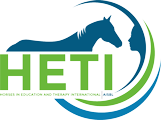Therapeutic riding and subdisciplines in Germany: An explorative study on commonalities and differences using focus group methodology
€10.00
| Author | Isabel Stolz, Volker Anneken, Vera Tillmann, Ingo Froboese |
|---|---|
| Year | 2023 |
| DOI | |
| Volume and Page number | Volume 22, page 43 |
Different forms of physical, mental, and psychosocial therapy approaches with the involvement of horses were established historically and include various subdisciplines of therapeutic practice on the horse. In the international discourse, subdisciplines are not clearly distinguished when describing therapy content, processes and goals, which could lead to a lack of clarity in understanding for the professional and public community. Disciplines are united by the holistic, resource-orientated view, considering biopsychosocial aspects for an improvement of the performance of activities and participation. Therapeutic objectives focus on function-orientated physiological or psychosocial approaches depending on underlying therapeutic schools and therapeutic orientations, which should be distinguished more clearly in the international discourse. This explorative study aims to contribute to the development of theory in the scientific discourse, based on a German perspective. For this purpose, commonalities, and differences between Therapeutic Riding and subdisciplines have been elaborated based on four focus groups with experts and therapists using qualitative content analysis (in total 17 participants). The results stress that therapy processes are based on common movement-specific principles such as the movement dialogue and relational triangle between the client, the therapist and the horse, from which the different approaches focus on differentiated targets in mental, motor and psychosocial areas. Common clear-cut terminology and standardization in therapy could differentiate targets and intended effects of therapeutic riding more precisely. This could contribute to clarifying effect factors for certain target groups and increase evidence-based assessment of therapy outcomes.

